Hey, We Make Hay While the Sun Shines!
If you’ve got the field, we have the equipment. We shoot for the perfect harvest time during fair weather when grass seeds are not quite ripe and the leaves are at their maximum growth. Square or round, we get them bound! Contact us.
We’ve Got Gift Baskets!
There’s nothing like Christmas time at Peaceful Valley Farm! The entire kitchen turns into a Wonderland of sizzle, roast, boil and simmer and the smells seem to hang around in your nose ’til just about the first cusp of spring. ‘Course the vittles themselves disappear before Santa’s even done warmin’ up his sleigh, so you best not be dawdling to get yours! Let’s see, we’ve got honey, jams, preserves, cookies, cheesecakes, sauces, relishes, candles and more. Come on by and we’ll fix up a basket or two for you! Oh, and before I forget–on account of bein’ so busy: Happy Holidays from Peaceful Valley Farm!
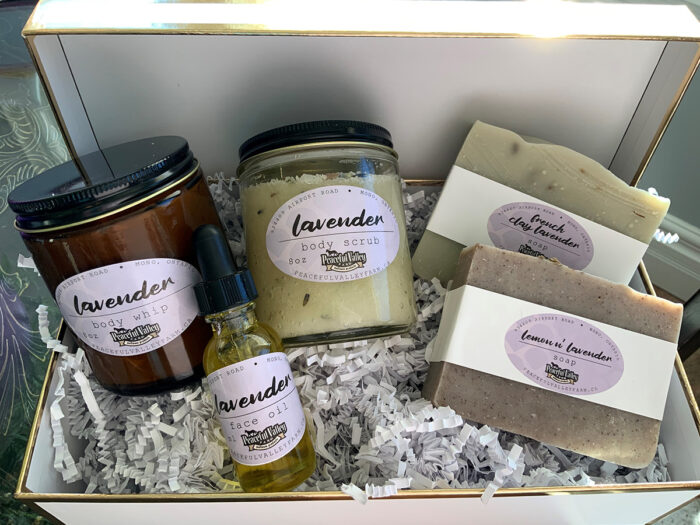
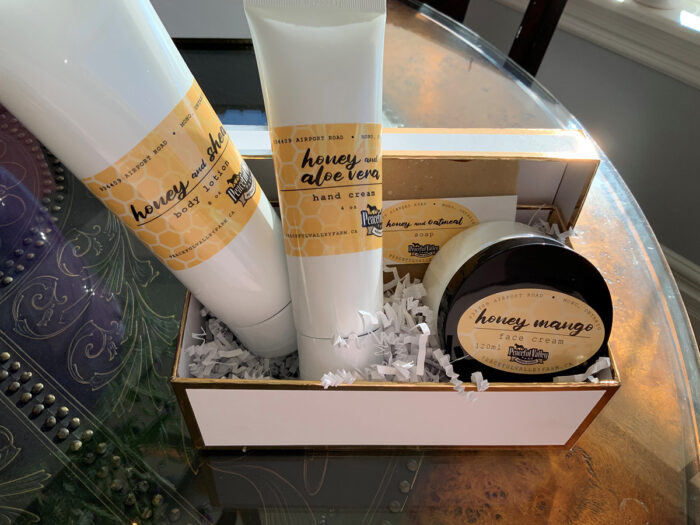
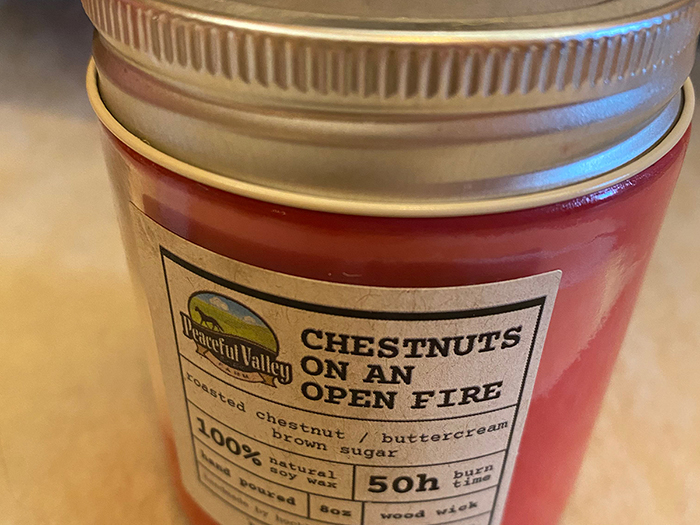
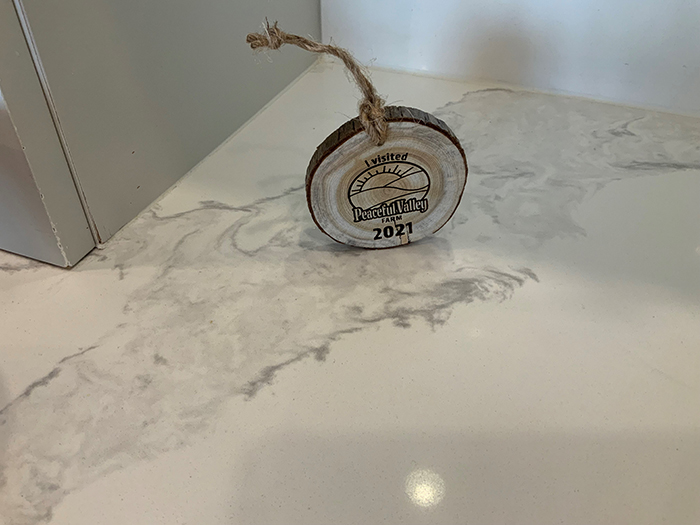
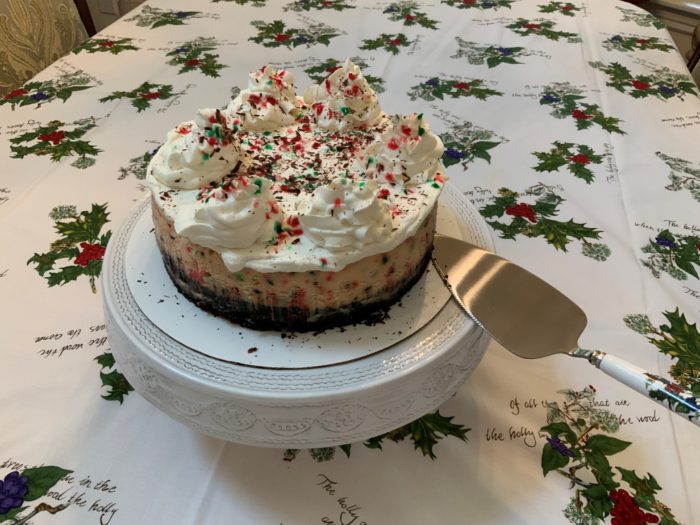
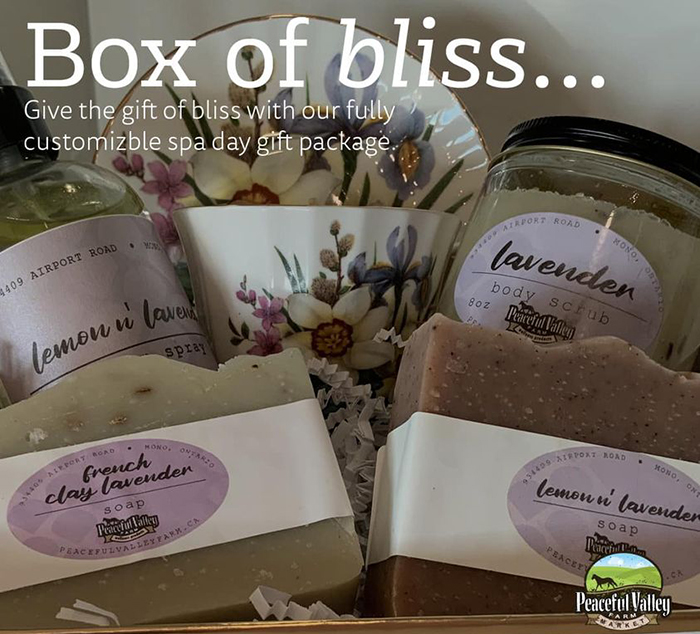
Peaceful Valley Farm Honey
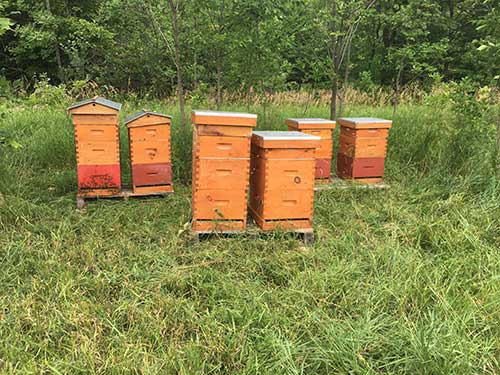
What our bees do
Our honey bees feast on the nectar of the many wildflowers that flourish on our property. The bees store this nectar in their “honey sack” and bring it back to the hive where other worker bees suck out the nectar and “chew” it, breaking down the nectar’s complex sugars into the two simple sugars called glucose and fructose. The bees then deposit the “chewed” nectar into the cells of wax honey combs they’ve built. Then, they fan the deposited nectar with their wings until most of the nectar’s water content evaporates–creating the thick and gooey treat we call honey. The bees then seal up each honey-filled cell with beeswax.
Most baby bees–also known as larvae–eat this honey–as does the rest of the hive during winter, when they can’t forage. However, true to their industrious reputation, bees make a lot more honey than they need–about to 65 extra pounds a years from a single hive. So, without bears and other critters around to eat it, a beekeeper doesn’t harm the bees at all by harvesting a good portion of their honey supply. And, at Peaceful Valley we always leave our bees with plenty of honey to eat during the winter.
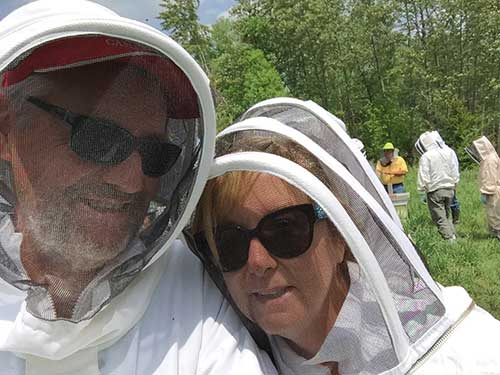
What our beekeepers do
“But how do you get the honey?” We hear that question a lot, so here goes.
It used to be that the only way to separate the bees from their honey resulted in killing the bees. Then, in about 1848, the Langstroth hive was perfected. It’s basically a wooden frame or tower that has several sections. In each section there are a whole bunch of removable inserts called “supers” that look a bit like furnace filters, but instead of a filter they have a honeycomb structure. The bees use this to store their honey.
When the beekeeper comes along to get the sweet stuff, he opens the top of a section and billows in some pine needle smoke to calm the bees down (the smoke masks the guard-bees alarm pheromones–chemicals they admit into the air when trouble is near). Then the beekeeper puts cherry oil–which bees hate the smell of–on top of the section supers, which makes the bees descend down out of the supers of the first box into the box below. The beekeeper can then pull the top supers out with hardly any bees still in the honeycomb. Then, it’s just a matter of taking a knife and cutting through the wax seal the bees put over each honeycomb and draining the honey out, often with the help of an extractor machine that spins the super, drawing all the honey out. Then, we simply filter the honey to get rid of any debris and excess was and into a sterilized jar it goes! Then the supers and returned, clean, to their boxes and the bees start the whole process all over again.
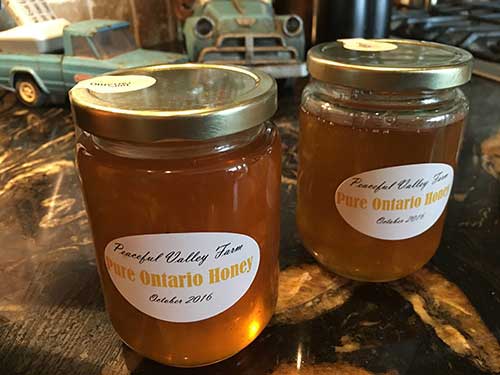
Benefits of Honey
Archaeologists have discovered honey in tombs of ancient Egypt that is thousands of years old–and when some brave person sipped a spoonful of it, they said it was more or less the same as honey you might have tasted last week!
Bee “stomachs” naturally produce hydrogen peroxide–a mild acid used as an anti-bacterial–that is introduced into the nectar they ingest, along with other natural healing enzymes from the flowers. Not only that, honey has virtually no water. These two facts make it nearly impossible for any kind of bacteria to set up shop. This may be part of the reason why honey applied to the skin acts as a sterilizer, prevents infections and heals wounds.
The antioxidants in honey are also said to lower blood pressure and cholesterol, as well as the risk of heart disease. Honey is also used as a natural cough suppressant, especially in children.
But the number one benefit of all natural, Peaceful Valley Farm honey is that it tastes great–much better than sugar!
Peaceful Valley Maple Syrup
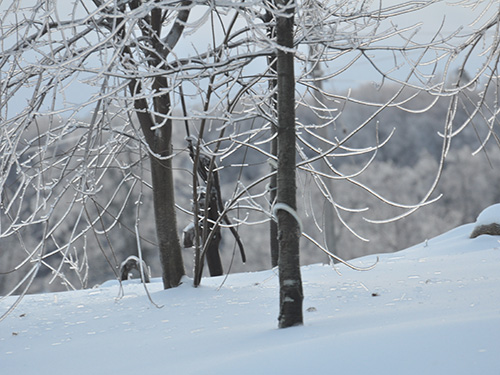
What our Maple trees do
Maple syrup is one of the few “crops” produced solely in North America (Canada being the biggest producer by far) and its one of the oldest, having been produced by Native Peoples of the Great Lakes and St. Lawrence River area before the arrival of Europeans.
Like all plants, maple trees convert carbon dioxide from the air obtained through their leaves, into simple starches through the process of photosynthesis. The tree stores these starches in specialized cells in the trunk as reserves over the winter. As the ground around the tree begins to thaw in early spring, the abundance of water is taken up by the trees relatively dry roots and works its way up the trunk, transforming those stores of starches into sugars on its way up. The tree will continue to do this only if temperatures are both below freezing at night and above freezing during the day. Once temperatures become too warm, or budding begins, the tree switches over to other methods of nutrient delivery which renders sap that is unsuitable for maple syrup production. Although many other species of trees produce sap from which a syrup could be made, the maple is unique in that its sap has a relatively high sugar content (about 3%) and a large volume of sap flow that make syrup production economically viable.
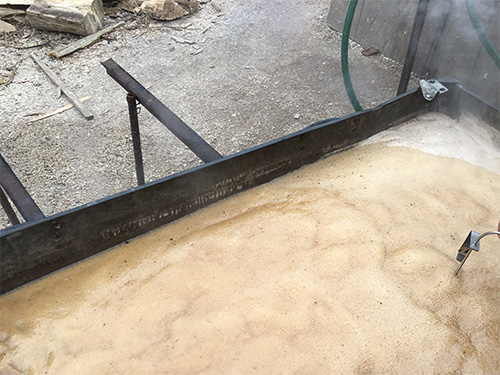
What our sugar maker does
The flow of sap up the trunk of a maple tree–weather permitting–has enough pressure to leak out from the first opening it can find. The sugar maker takes advantage of this fact by drilling a small hole into the trunk, which is called a “tap”. The sap then drips out of this hole and into either an awaiting bucket or into an elaborate pipe line that leads–one way or another–to the “sugar shack”.
If you’ve ever tasted maple sap straight from the tree, you’ll know that it doesn’t taste much like “maple” and has a very watery and only a slightly sweet taste. After collecting the sap, it’s the sugar makers job to get rid of most of the water and by evaporating it by applying heat. This also “cooks” the sap and–through a process not completely understood–imparts to maple syrup its characteristic flavour. At the “sugar shack” at Peaceful Valley farm, we boil our sap for days over a wood-burning fire. As a general rule of thumb, it takes 40 gallons of maple sap to produce just one gallon of maple syrup. So, since, a single tap in a maple tree can produce 10 to 20 gallons of sap per year, that means an entire tree produces just 1/4 to 1/2 a gallon of maple syrup per year.
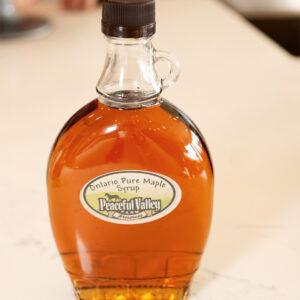 Benefits of Maple Syrup
Benefits of Maple Syrup
Among other things like natural unrefined sugars, carbohydrates and small amounts of fat, maple syrup contains minerals such as calcium, iron, magnesium, phosphorus, sodium, potassium, and zinc as well as vitamins such as thiamin, riboflavin, niacin, and B6. Maple syrup is rich in antioxidants, is heart healthy and has been shown to strengthen the both the immune and reproductive systems. When used in appropriate amounts, maple syrup nutrition benefits can include the ability to lower inflammation and better manage blood sugar.
But, of course, the biggest benefit to maple syrup is the unique taste–which can really only be described as “maple”–there really is nothing else like it. Try it in tea or coffee or on fruit instead of sugar. Salmon tastes especially good in a maple syrup glaze as do sausages and many other foods. Pancakes and waffle would never be the same without it. Enjoy!
Peaceful Valley Jams & Jellies

Peaceful Valley makes marmalade and strawberry, blueberry and raspberry jams from fresh local fruits. We also make grape jelly and thimble berry (aka “blackberry”) jam from grapes and berries grown on our property. There’s not many things you can eat that are purple, so when you come across something that is, its definitely okay to gobble them up. Thimble berries–or any jam made with them–has one of the highest levels of antioxidants of any food under the rainbow. They’ve been eaten by humans for at least 2500 years and they have significant amount of dietary fiber, vitamin C, and vitamin K, especially if the seeds are eaten. Perfect on a warm scone with clotted scream or smothered over hot buttered toast!



